











Tuia ki te rangi, Tuia ki te whenua, Tuia ki te moana, Tuia te here tangata, Ka rongo te pō, ka rongo te ao, Tihei mauri ora!

Bind the domain of the sky, Bind the domain of the land, Bind the domain of the ocean, To bind the tapestry of humanity, Which can be felt in the night, And felt in the day, Behold there is life!


Welcome
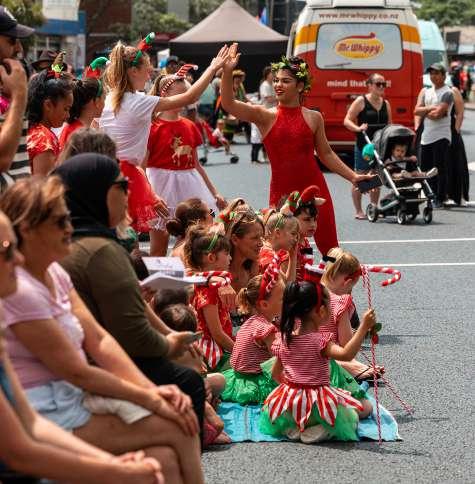


Nau mai rā, kia kitea ai tā mātou e tūmanako nei e pā ana ki te momoho o ngā hapori o Tāmaki Makaurau. E ora ai te iwi, me mātua tōnui te hapori me ō rātou takiwā noho.

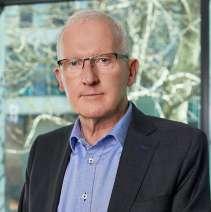
Welcome to the Thriving Town Centres guidance for the urban regeneration of Auckland’s town centres. This is a celebration of the local town centre –those enduring places at the heart of our communities.
Town centres are, at their essence, the marketplaces where people trade and exchange, gather and connect. This is where the communities build enterprise and cohesion.
Eke Panuku is passionate about creating thriving town centres where people, communities and businesses flourish.
Tāmaki Makaurau / Auckland is one of thousands of cities worldwide that is working to revitalise urban places and reconnect people with their local
Paul Majurey Eke Panuku Chaircommunities. Global and local challenges such as climate change, affordable housing and recovery from the Covid-19 pandemic highlight the need for adaptive and innovative approaches. We take a holistic, place-led approach to our regeneration programmes to improve social, cultural, economic and environmental wellbeing.
Partnership and collaboration are essential to our work in urban regeneration. This is reflected throughout this guideline in our operating context, shared vision and principles, as well as the tools that we use. Mana whenua world-views, mātauranga Māori and te reo Māori are highlighted.
This guidance consolidates the experiences and lessons learnt from the urban regeneration of Auckland town centres. Six common principles for successful, thriving
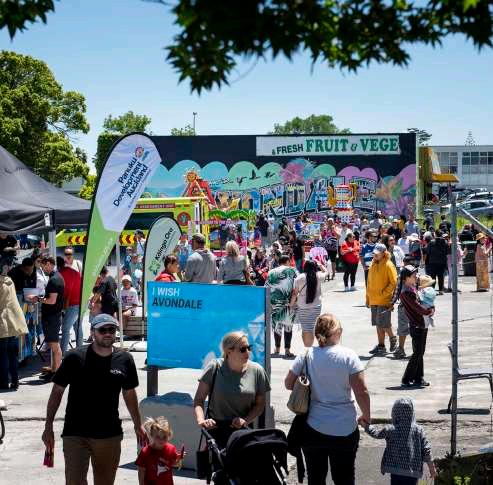
town centres have been gathered through a comprehensive engagement process with our partners and stakeholders. The principles recognise that each town centre is unique with its own character, history, and identity. We encourage you to use these principles, and to consider where your work can support local town centres to thrive.
In our Toolbox we highlight nine main approaches that will help create successful town centres. We hope these provide insights and advice for others on how urban regeneration activity is delivered in a New Zealand context.
We are delighted to share this document with you and look forward to continuing to work together to create thriving town centres for all.




03
14 Eke Panuku Strategic FrameworkTe anga whai rautaki a Eke Panuku
15 Map of Eke Panuku town centresTe Mahere o ngā Pokapū Tāone o Eke Panuku
We are a council-controlled organisation (CCO) delivering urban regeneration in specific locations throughout Tāmaki Makaurau / Auckland.
Creating amazing places
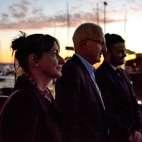


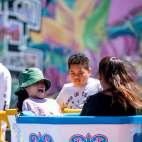
Placemaking
Showing business leadership
Quality urban design & development
Sustainability & climate change
Māori outcomes
Residential choices
Economic outcomes
Relationships & engagement
Priority Development Locations
Catalyse urban regeneration
Portfolio Management
Strategically create value from assets
Within the Toolbox (section 9) there is further explanation of our strategic framework.
Eke Panuku has two core functions:
1 Our urban regeneration programmes across Tāmaki Makaurau / Auckland, with a focus on town centres and locations agreed with Auckland Council.
2 Our property portfolio, where we manage $2.3 billion of the council’s non-service properties.
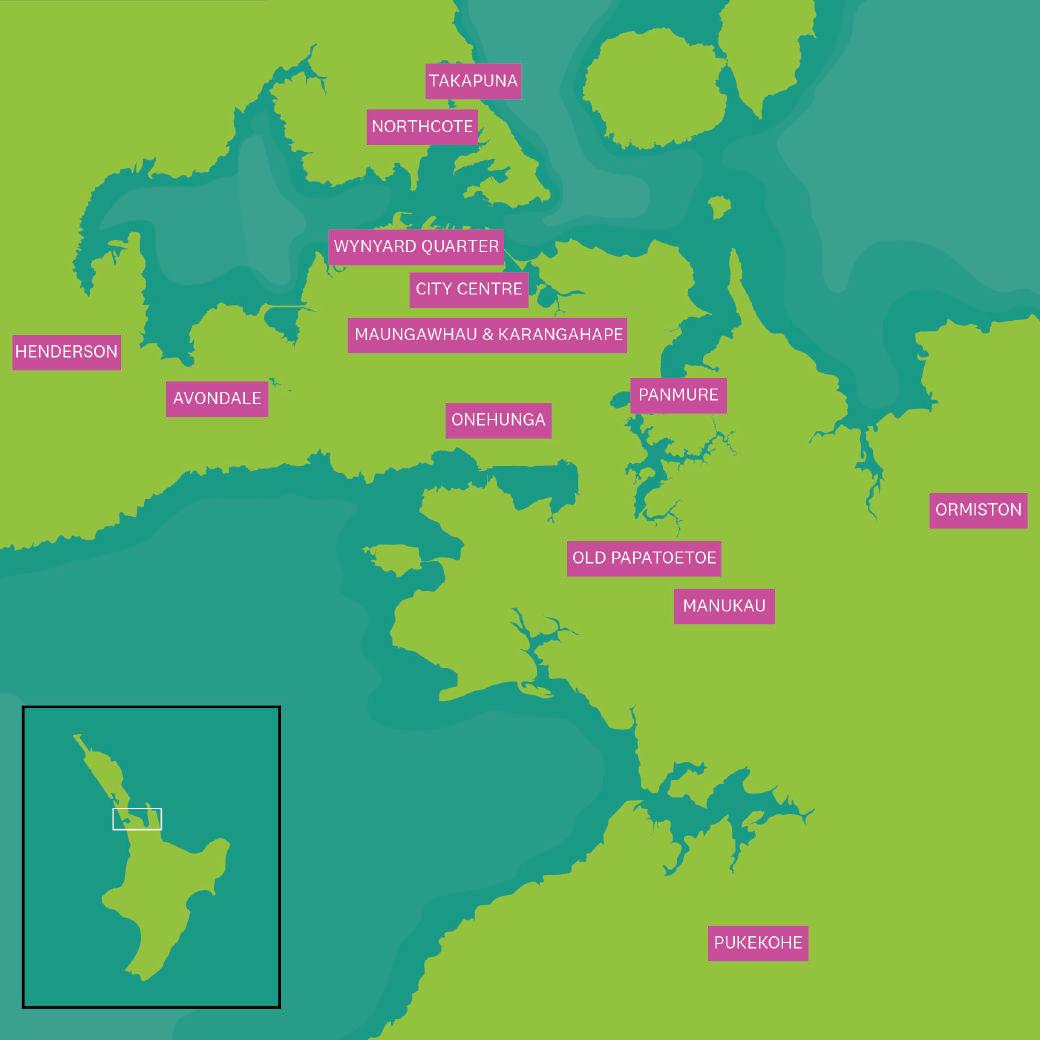
Eke Panuku town centre locations have been agreed with Auckland Council as priority places for our involvement and investment1.
The town centres we work in range in size, from the Auckland city centre and waterfront, metropolitan centres such as Manukau and Takapuna, to smaller, more local centres such as Avondale and Papatoetoe.
1 Selection criteria includes: presence of key council land holdings, scale and impact, commercial viability, leveraging previous investment, proximity to public transport and partnership opportunities.


18 Why we’ve prepared this document – He take kua whakaritea tēnei aratohu
19 Who’s provided input? – Ko wai kua tuku whakaaro mai?
momoho ngā pokapū tāone
At Eke Panuku, we have a bold ambition to achieve thriving town centres through place-based programmes and partnerships. Our vision is to create amazing places, and we do that by working closely with others.
As Tāmaki Makaurau / Auckland’s urban regeneration agency, our focus is on strengthening and growing communities around thriving town centres. This guidance defines our core principles and critical success factors based on social, environmental, cultural and economic values.
It describes our strategic urban regeneration approach and how we support climate action, low-carbon lifestyles and Māori outcomes, while facilitating new kāinga (homes) with better transport choices and enabling economic opportunities.
This guidance applies to our town centre locations; we recognise that each town centre is different. These are principles for all our partners and stakeholders to consider - they offer guidance, are non-statutory, and are not intended as technical guidelines.
The guidelines have been designed to:
• capture a common understanding of how, to become successful in this mission, everyone has a role to contribute
• guide us in our approach to town centre regeneration, clarifying our role and approach with our partners, stakeholders and the communities with whom we work
• bring together our experience of urban regeneration, a diversity of views and aspirations, market realities, plus indigenous, local and international best practice
• be flexible enough to reflect the aspirations and needs of different communities, while practical enough to be brought to reality given market and resource constraints and conditions
• be consistent with council and government planning and policy settings, including the Government Policy Statement on Housing & Urban Development, National Policy Statement Urban Development, Auckland Plan 2050, Local Board Plans, Te Tāruke-ā-Tāwhiri: Auckland’s Climate Plan, Regional Land Transport Strategy, the Thriving Communities Action Plan - Ngā Hapori Momoho, and the Economic Development 2021-2024.
To strengthen our relationship with mana whenua - our treaty partners - their perspective on thriving town centres is included in this guidance. The aspirations within this document have been designed by iwi who make up the mana whenua forum for Eke Panuku. They look to benefit all communities across the region and hold wellbeing, equity and inclusivity at their heart.
We have undertaken a comprehensive engagement process to help develop the guidance. The generous sharing of information and ideas from these different groups has helped to ensure that the guidance benefits from diverse perspectives, values and experience.
We have engaged with our mana whenua forum, local boards, Te Kaunihera o Tāmaki Makaurau / Auckland Council, Auckland Transport, Auckland Unlimited, Watercare, the Independent Māori Statutory Board, and Kāinga Ora – Homes and Communities. We have also involved key stakeholders across urban design, the development sector, business improvement districts (BIDS), youth, disability and social services, and community housing sectors, alongside the whole Eke Panuku organisation.

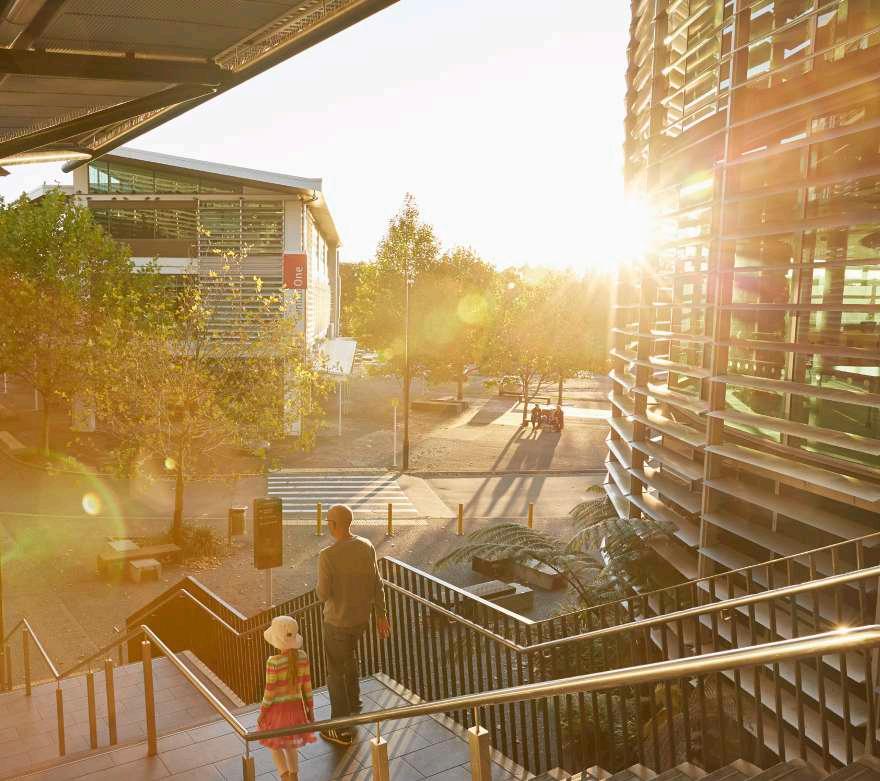

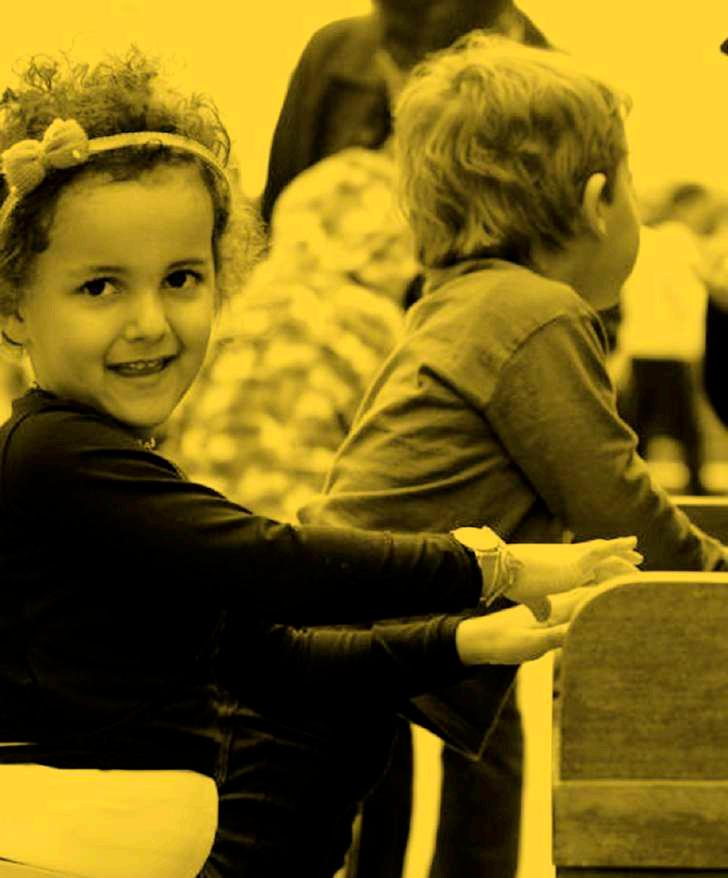
Creating amazing places – thriving town centres
Tāmaki Makaurau / Auckland is a city of strong neighbourhoods with town centres that capture hearts and energise lives, unlocking potential and possibilities, where people can thrive.
People and place are at the heart of our work – our approach to town centre regeneration builds on the following foundations that are woven throughout our principles and criteria:
• Mana whenua outcomes
• Regenerative practice shifting beyond sustainable thinking
• Equity and communities of greatest need.
Eke Panuku is committed to upholding the principles of Te Tiriti o Waitangi (the Treaty of Waitangi, Aotearoa / New Zealand’s founding document) and respecting the mana motuhake (independence, sovereignty) of the 19 independent iwi who represent mana whenua in Tāmaki Makaurau. The mahi ngātahi (collaboration) between Eke Panuku and mana whenua promotes te ao Māori (the Māori worldview) across Tāmaki Makaurau, and this is a hugely important part of our everyday mahi (work).
The regeneration of town centres, neighbourhoods, built environments and public spaces in Tāmaki Makaurau is a chance to embed Māori identity, as well as to grow opportunities for mana whenua, who tell us that their stories are hidden, and waiting to emerge from the landscape. Māori identity and culture are Tāmaki Makaurau / Auckland’s unique point of difference in the world. Iwi, hapū, whānau and Māori communities (also known as mātāwaka) aspire to have healthy and prosperous lives. Mana whenua outcomes have been defined as the areas that matter most to whānau, marae, iwi and communities – outcomes that will support and progress towards these aspirations.
Collaboratively created and monitored, the Mana Whenua Outcomes Framework - Te Anga Putanga a ngā Mana Whenua - signifies a partnership based on mutual respect and wellbeing. We share an interest in a place-based approach where impact and outcomes are not limited by lines on maps. Mana whenua outcomes have been identified as a foundation in the development of this town centre guidance.
The Mana Whenua Outcomes have been arranged into five pou (pillars). Located at the heart of the Outcomes Framework, these pou – te pou mō te mana hautu (governance), te pou mō te ahurea tuakiri (culture and identity), te pou ōhanga (economic), te pou oranga (wellbeing), and te pou mō te taiao Māori (natural environment) help us to organise and focus outcomes into common activities.
1. GOVERNANCE POU
TE POU MŌ TEMANA HAUT Ū
•Mana whenua co-govern Tāmaki Makaurau.
• Mana whenua influence open & transparent decision-making across Tāmaki Makaurau.
•Leverage partnerships to grow mana whenua success.
5. WELLBEING PO U
TE POU ORANGA
Increased knowledge & high-value, transferable skills for mana whenua & Māori. Increased long-term, well-paid employment & fulfilling careers for mana whenua. Improved standards of housing for mana whenua.
2. CULTURE & IDENTITY PO U
TE POU MŌ
TE AHUREA ME TUAKIRI
•Māori culture seen, heard & felt.
PO U
3. NATURAL ENVIRONMENT POU
TE POU MŌTE TAIAO MĀOR I
• Improve mauri o te taio, mauri o te wai & oranga o te hau.
4. ECONOMIC POU TE POU ŌHANGA
Mana whenua & Māori have a significant investment in, and are key economic contributors to, Tāmaki Makaurau
Aspects of the five pou are woven through the town centre principles and criteria that follow.
There is significant regional variation of mātauranga Māori (Māori knowledge). Mana whenua are not a homogeneous group and mātauranga varies between iwi, hapū, and whānau. Efforts should be made to connect with specific mana whenua who hold authority pertaining to the rohe (boundaries) of each project and to attain appropriate representation of mana whenua based on each distinct location. These are essential steps in ensuring positive Māori outcomes.
To respond effectively to the needs and aspirations of mana whenua and Māori communities, this guidance seeks to reflect te ao Māori and be informed by mātauranga Māori. A holistic Māori world view and regenerative practice recognises that Eke Panuku projects have the ability to influence the mauri (life essence) of the project both positively and negatively.
Eke Panuku continues to evolve and develop approaches, frameworks and tools with mana whenua. The assessment tool Take Mauri, Take Hono was developed by mana whenua representatives for Eke Panuku. It reflects best practice for the evaluation and assessment of project development from the viewpoint of mana whenua. While the framework was designed to enhance the mauri of ecological settings, it reflects the values of te ao Māori that are applicable to many other projects. This tool needs to be applied on a case-by-case basis and is described in more detail in the Toolbox.
Regenerative approach – we use a whole-system approach to strive for a future that is richer, healthier and more abundant through the evolution of natural, social and economic systems. Considering these living systems as nested and inextricably linked, we can support a future where a greater population and density can lead to a thriving economy, community and environment. Regenerative practice acknowledges that our town centres and their surrounding catchments have inherent natural attributes and potential.

Equity – the Auckland Plan’s goal is to enable all Aucklanders to feel part of and contribute to society, access opportunities and to develop to their full potential. Increasing equity means removing barriers and extending the range of opportunities and choices available for Aucklanders to participate in society in a way that they value. It also involves building people’s capabilities to make the most of opportunities available to them. Equity encompasses support for the most vulnerable members of society and directing resources to where they will have the greatest impact. Thinking about equity means considering the distribution of impacts (positive and negative) across society, taking particular account of vulnerable groups or people in vulnerable situations4.
3Auckland Plan, Belonging and Participation outcome
4Communities of Greatest Need Practice Note (July 2021), Auckland Council, Thriving Communities 2018
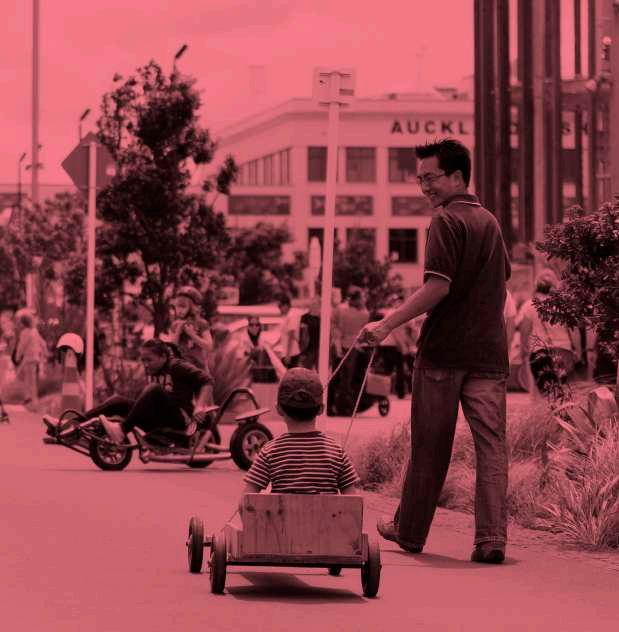
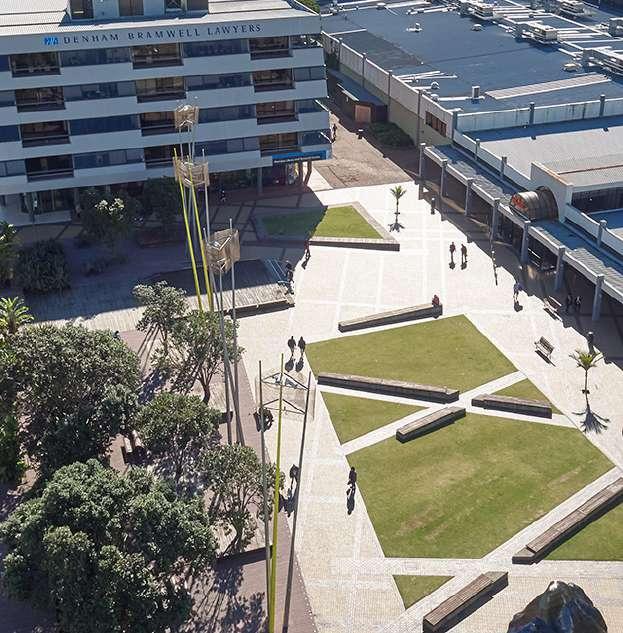

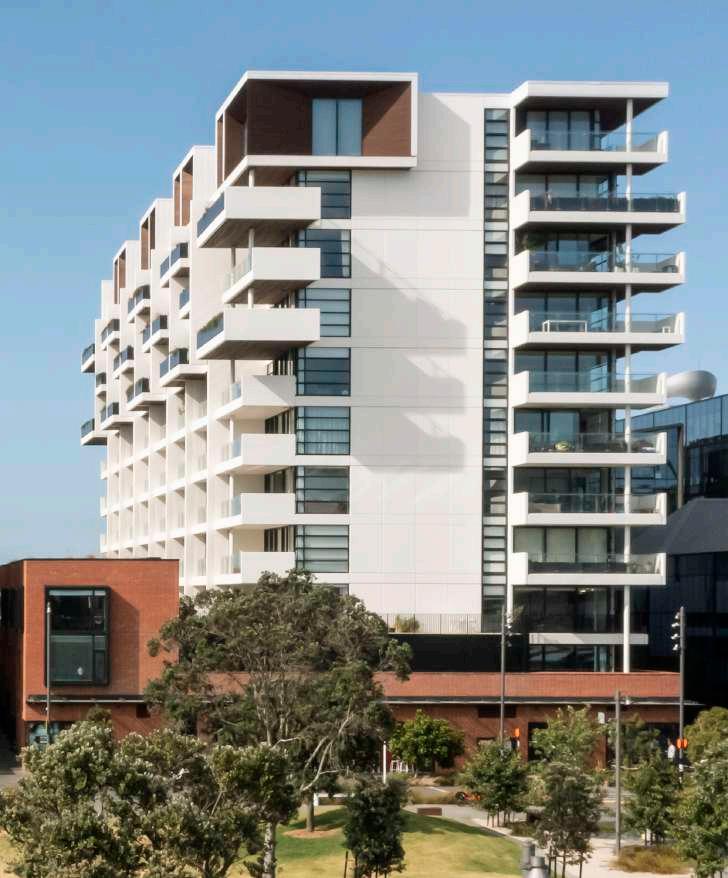
28 The nature of town centres - Te āhua o ngā pokapū tāone
28 Current trendsNgā ia o te wā
30 Future drivers of change - Ngā ākinga o anamata mō te huringa
Town centres are the heart of neighbourhoods, the focal points for their community. A town centre is an enduring location that offers a mix of activities and services.
Town centres originally developed as places for the exchange of goods and services, as well as gathering places for people providing democratic spaces where communities can gather. As they have evolved over time, the civic nature of town centres as places for ideas, creativity and innovation - as well as social and cultural exchange, and places to live - has become a significant part of urban life. Their character, that reflects their history, heritage and contemporary culture, means they are a focus and the heart the community.
Many of our local town centres face significant challenges, including:
• a shift in business practices that has caused a decline in civic, business and employment presence. This has led to shop vacancies, empty office spaces, a loss of public amenity, such as council offices, government agencies and traditional local services e.g. banks, with a resulting loss of activity and vibrancy
• reduced investment in amenity and public realm, leading to a poor experience for the community and visitors, as well as reduced safety or a reduced perception of safety
• the dominance of vehicle infrastructure, larger roads and under-utilised parking, creating a poor-quality environment
• growth of online retail from 9% market share (2019) to 11% market share (2020), with significant expansion of online retail anticipated to continue
• online supermarket deliveries, which are changing the role of supermarkets and their function as anchors in centres
• concentration of retail activity in malls and large-format stores serving much larger catchments - shops offering comparison goods often locate out of centres, posing risks to town centres that may struggle to diversify their offering
• lack of leisure opportunities located in local centres
• the Covid-19 pandemic, which has accelerated a number of these existing trends, including a shift to more online retail and changes to the way people choose to live and work.
11Community Insights data or public life survey – check and add here
12NZ Post (2021) The Full Download
ekepanuku.co.nz
There are many reasons for optimism, however, as town centres respond and adapt, rebuilding on their fundamentals as places for goods, services and social exchange.
• Town centres can become destinations, focused on their unique offering providing opportunities for people to meet in safe, comfortable spaces that are place-led and responsive to the neighbourhoods they serve while attracting visitors.
• The recognition of the character and individuality of centres, with less demolition and more adaptive reuse of historic buildings.
• Town centres can diversify their offering. There are opportunities to restore and enhance social and community connections in centres through placemaking, shop-local campaigns, community functions and services, activations, and events.


• The Covid-19 pandemic has impacted the local town centres of Tāmaki Makaurau / Auckland in different ways, depending on the nature of the local economy. Many town centres have enjoyed a strong bounce-back as people spend more time in their local areas.
• Town centre retail can provide a personal customer experience and knowledge in-store.
• Despite the challenges of Covid-19 lockdowns, hospitality has been a growing sector for local centres. This sector helps to increase activity and people in the centre, including the night-time economy.
• People are increasingly placing value on flexibility in the way they work, working from home, close to home or close to the rapid transport network. Locally focused centres are benefiting from these structural employment changes.
• Multi-purpose community facilities and services help to attract people to visit and stay in a centre, while also increasing foot traffic.
Our planning for town centres needs to think long-term and consider the impact of large-scale, high-impact and often interconnected forces that will shape our society and economy in the future6. As the Covid-19 pandemic has highlighted, a significant challenge facing our communities and town centres today is that the pace of change is increasing at an exponential rate. We live in a dynamic world where our social, economic and ecological systems are experiencing changes faster than ever before. This requires us to develop new capability and capacity, and to embrace innovation and change as an ongoing opportunity.
These are the large-scale megatrends that are likely to shape the nature, function and experience of town centres over the long-term7
Town centres will continue to evolve and adapt as they address these drivers of change and leverage new opportunities. Plans for town centres today need to be aware of and consider how things will change in the future. This approach emphasises:
• resilient communities around town centres that empower individuals, whānau and businesses, equipping them to navigate increasing change
• mana whenua, indigenous and holistic approaches
• flexible, adaptable and multi-use buildings and places
• circular systems, regenerative practice, reuse and repair
• residential and transport choices that consider universal design, ageing in place, smaller households and larger multigenerational living
• decentralised systems for energy, transport, food and water
• changes in the way we work
• transition from current state to future state.
6Megatrends (Feb 2021), Auckland Council, Futures Toolkit
7 Ibid.
Biodiversity loss | Climate change
| Net zero carbon emissons | Resource scarcity | Energy transition | Circular economy | Future of food
An aging population | Rise of generation Z | Māori & Pacific populations | Increasing ethnic diversity | Urbanisation | Societal changes | Health challenges
Geopolitical instability
| Political polarisation
Growing wealth inequality
| Current economic model | Changing working lives
Internet of things | Automation | Human Augmentation Technology
| 3D printing | Changes to how we store, share & protect data

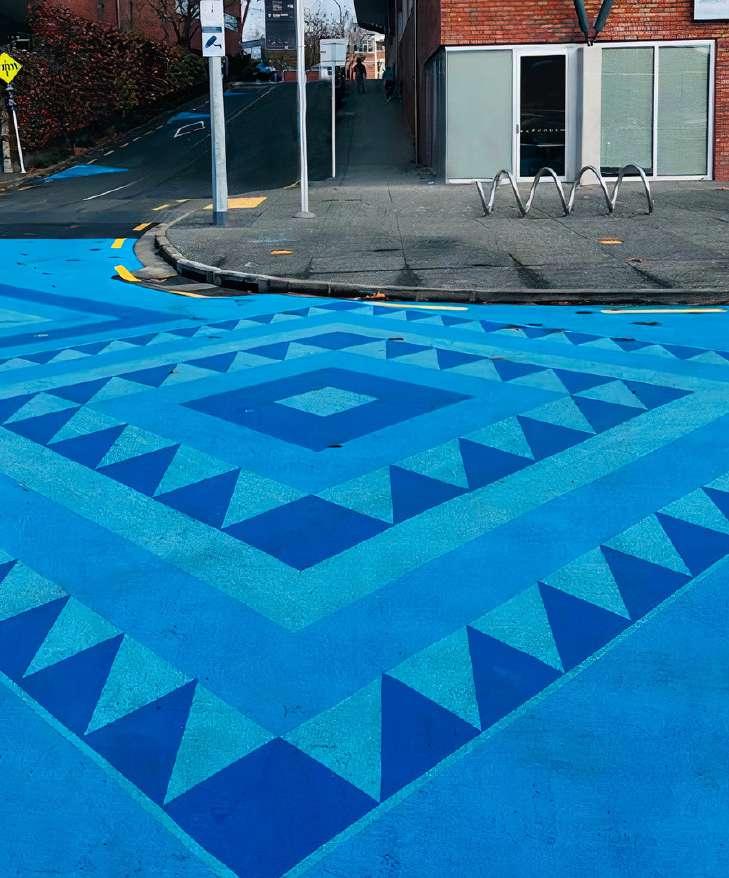
07
34 Accommodate growth - Te whakarite kia kaha ake te tupu
34 Enable low-carbon living - Te tuku kia ora me te iti te waro
35 Support community connection - Te tautoko i te hononga
ā-hapori
35 Provide economic benefits - Te tuku hua
ā-ōhanga
35 Use existing infrastructureTe whakamahi i ngā
hanga matua kua tū kē
Research8 continuously reinforces the importance of our mission to redevelop town centres as places to:
Thriving town centres deliver a quality compact approach9 to future growth and development:
• One of the fastest-growing cities in the southern hemisphere, over the next 30 years it is estimated Tāmaki Makaurau / Auckland could grow from 1.7 million people to around 2.4 million. Town centres will play a role in providing new homes, jobs and services for this expanding population. Over the next 30 years, around 62% of development is anticipated to be within in the existing urban area, with an additional 32% of development in future urban areas10.
• Increasingly, people want to access their daily needs within a walkable neighbourhood, and thriving town centres cater to this demand.
• Safe, affordable and secure housing is an ongoing challenge. Significant increases to the supply of new housing are needed to provide secure and healthy homes for Aucklanders.
Thriving town centres can support low-carbon lifestyles11 by:
• Taking bold action to reduce our greenhouse gas emissions by changing how we live, work and travel
• Planning land-use and transport planning to help shift to an eco-friendly, resilient region68% of Auckland’s emissions relate to transport. New, mixed-use developments reduce the need for private vehicle travel with less need for trips, shorter trips, more walking and cycling, and better access to public transport
• Preparing communities for a changing climate and improving resilience (the ability to recover quickly) across health, wellbeing, infrastructure and the built and natural environments
• Supporting the Auckland Council urban ngahere (urban forest) strategy to increase tree canopy cover region-wide, which will support the many ecological functions and services the urban ngahere provides12
8Town Centre Guidelines research paper (Feb 2022)
9Auckland Plan 2050 Development Strategy
10Auckland Plan 2050 Development Strategy – Auckland’s capacity for growth
11Te Tāruke-ā-Tāwhiri Auckland climate plan
12Auckland’s Urban Ngahere (Forest) Strategy
Thriving town centres can foster more connected and equitable communities13 through:
• Shared spaces where civic, social and cultural life can flourish - an important way to develop a connected, inclusive society
• Welcoming and safe places that can help combat loneliness, depression and isolation, offering everyday interactions that are proven to support positive relationships, improve our perception of safety and contribute to our sense of community
• Neighbourhoods that reflect mana whenua identity, local character, diversity, heritage and culture
• Prioritising communities with limited access to social and economic resources and opportunities, ensuring that vulnerable communities - including people experiencing homelessness - are supported.
Provide economic benefits - Te tuku hua ā-ōhanga
Thriving town centres encourage business and employment growth and opportunities:14
• Increasing opportunities for local economic growth, employment and investment that help retain spend within the neighbourhood catchment
• Supporting the city’s local economic centres through high-quality, place-led urban regeneration projects, transit-oriented development, employment opportunities and attractive public realm.
Use existing infrastructure - Te whakamahi i ngā hanga matua kua tū kē
Thriving town centres in existing urban locations optimise the use of existing infrastructure15, such as:
• Quality infrastructure systems that enable more housing choice, including affordable housing options, and provide value in terms of whole-of-life costs
• Maximising economies of scale in infrastructure investment through higher-density employment and housing clusters supported by quality, frequent public transport and community services (e.g. health, education)
• Encouraging the repurposing or redevelopment of buildings and spaces
• Optimising urban public spaces as Tāmaki Makaurau / Auckland grows to provide people with access to quality experiences. Includes open space, sports fields, parks, greenways, walkways, cycleways, roads and streets, town squares and plazas.
13Auckland Plan Belonging & Participation
14Economic Development Action Plan 2021-2024
15Auckland Plan 2050 and Auckland’s 30-year Infrastructure Strategy


Principles are the strategic outcomes that will enable town centres to thrive. Criteria are used to identify the main attributes that will help achieve success under each of the principles.
It is anticipated that some criteria will be more relevant than others, depending on the unique characteristics of each town centre and its location and history.
The combined principles and criteria will guide Eke Panuku urban regeneration programmes, and will be used:
• as a communication and advocacy tool for stakeholders and partners
• as a guide and reference document for staff
• to articulate agreed minimum standards
• as a reference for masterplanning and urban design review
• as a framework for town centre monitoring
• to apply in the planning for any new location programmes
• to apply to any programme-level substantial reviews.
15Auckland Plan, Belonging and Participation outcome
16Communities of Greatest Need Practice Note (July 2021), Auckland Council, Thriving Communities 2018
HistoryattributesLandscapetheplace heritage& Resilient Connected Space for & children’s play Arts&cultureInclusive Residentialchoices
UNIQUEIDENTITY
Kaitiakitanga
tiakitanga
Regenerative approach
TeManaoteWai Valueofwater
Naturallandscape
• &Futurefocused adaptive
PROSPEROUS &ROBUSTLOCAL ECONOMY
MixofusesFlexible&futureproofEffectivetown centremanagementEmploymentopportunities
Transition strategy attributesPhysical whenuaMana identity ofEssence
CSUPPORTIVE OMMUNITY HTLAEH
INTEGRATEDTRANSPORT
Neighbourhood amenities Healthy homes Quality intensification
builtGooddesignin environment
AccesssystemSafe choicesto
IntegrateManagedemands landwith use Parking, access and loading
Create a feeling of belonging for people to be proud of and express a point of difference.
The unique, place-led identity of a town centre creates a feeling of belonging and strong sense of place. Such individuality helps foster genuine community attachment and pride, giving the town centre its own point of difference. This is represented through natural and built features, the local culture and history, and of course the people who live there. These all contribute to a place’s identity in a positive way. Mana whenua values, pūrākau (historical accounts) and narratives will provide a deep understanding of the place and community connection to the wider region.
CRITERIA
Seek opportunity to express mana whenua identity in public realm and buildings.
Create physical attributes which will be unique for each town centre. This can include buildings, public art or elements of public realm that reflect the community.
Embed the character of local community, culture and economy in the design, look and feel of a town centre. Provide opportunity for cultural practice and events to be visible and occur in place.
Create an authentic and genuine attachment for a local community.
Enhance natural features within the landscape that define uniqueness of place. This includes views and vistas to the characteristic elements - maunga (mountains), water, recognisable trees or planting.
Respect and maintain identity of heritage features and characteristics. Draw out stories of the past and celebrate our traditions.



Integrate strategies, for land use and transport, to design, plan and create safe, accessible centres for all.
Well-planned land use acts as a catalyst for change in transport uses to support active modes (walking and cycling) and public transport for local trips, whilst recognising other modes and servicing. This approach has a potential to reduce emissions, increase safety, improve public health, support urban intensification, and provide inclusive, equitable access.
CRITERIA
2.1
Integrate land use and transport
2.2
Healthy and safe transport movement and networks
GUIDANCE
Ensure transport and land use strategies align to promote similar objectives, priorities and outcomes based on principles for transit-oriented developments (TOD). TOD is an approach that maximises the mix of uses, predominantly residential, business and leisure space within walking distance of public transport. Consider how the type, scale and capacity of different activities can encourage local trips.
Create integrated strategies to contribute to improved public health outcomes, reducing emissions to improve air quality, managing noise levels, and planning streets that are green, healthy and safe.
Enable universal accessibility to transport choices for all users, catering for vulnerable and disadvantaged people with specific needs.
Prepare strategies for safety - e.g. speed management, street design - should be identified, along with the benefits they bring to all modes and users.
2.3
Accessible neighbourhoods for all
Provide transport choices for people of all ages and abilities – equity is vital here.
Prioritise, and make attractive, safe active modes –walking and cycling – in centres, supported by welldesigned facilities and infrastructure.
Design legible places with high-quality public realm, including street tree planting, to encourage people to access their daily needs within a 15-minute walk of their homes.
2.4
Manage transport demands
2.5
Parking, access and loading
Use emerging technologies to encourage alternative travel modes (e.g. travel-planning apps) that can be part of a whole-journey approach.
Actively manage and balance the provision of parking and loading to support the viability and vitality of town centres, encouraging active modes and the use of public transport. Minimise visual impacts through design. Use new technologies to optimise all transport modes. Provide charging points for cars and cycles and encourage shared car programmes.
Integrate freight, loading and servicing requirements to support business and commercial activities.


Encourage connected, resilient places designed for all.
Places that are connected and designed for all enable supportive communities to flourish and become more resilient. With these attributes, people feel a sense of belonging and civic pride in their local centre as a place where people can - and actively want to - connect, gather and celebrate locally. Art and culture, especially important in a city as multicultural as Tāmaki Makaurau / Auckland provide multiple opportunities for expression, awareness, learning, entertainment, leisure, personal growth and improving communication with others. An inclusive community values all its members, enabling people to feel involved, live with dignity, engage actively, and contribute to their community.
3.2
3.3
Create inclusive, accessible, safe places that welcome a diverse range of communities and can support and encourage all users to participate. Foster a culture of respect by providing the opportunity to learn about and accept individual differences. Consider the impact of town centre changes on all communities to ensure that life is not made harder for our vulnerable citizens.
Ensure there are spaces that are welcoming, safe and inspire community connections through informal interactions and serendipitous meetings. Spaces where local events and civic community life can take place, in public spaces such as libraries, town squares, playgrounds and parks. Create opportunities for informal interaction and community activity to strengthen community bonds.
Consider children, young people and older people when designing spaces in town centres. Include fun and play for children, and safe spaces for seniors. This will enable a sense of belonging for a wide range of the community and help to activate the space.
Create resilient communities which are better able to withstand and recover from the impact of disasters and crises.
Work alongside communities to ensure they can collaborate and be resilient in the face of ongoing change. Ensure communities are connected, and that neighbours can get to know one another.
Value the importance of arts, culture to create opportunities that foster a strong sense of belonging.


Enable the regeneration of health and wellbeing for people, place and nature.
Quality urban places nurture and support the natural environment alongside the built environment. Supporting a shift towards low-carbon futures, a healthy and thriving natural environment enables the regeneration of health and wellbeing for people, place and nature.
Create resilient, future-focused town centres that acknowledge the uncertainty, and plan for the projected changes to the climate such as increase in temperature, sea-level rise and extreme weather events. Ensure that design and planning include the need for adaptability and agility.
Use a systems-based approach to support a shift towards low-carbon, resilient places that reduce greenhouse gas emissions, mitigate urban heat island effects and reduce flood risk. This also includes how we approach projects and work with local communities to ensure behavioural change.
Include low-impact design interventions such as using energy efficient, low-carbon materials, environmental planting and daylighting of streams, while addressing construction and demolition waste through designing out waste, reusing materials and diverting from landfill.
4.3
Te mana o te
wai (the value of water)
Value the role water plays in the health and wellbeing of Tāmaki Makaurau / Auckland. Work with water-sensitive design to both improve water efficiency / management and reduce waste. Ensure that designs improves the health of awa (rivers) and moana (ocean), and that the deep connection with water is supported, enabled and enriched.
4.4
Natural landscape
4.5
Kaitiakitanga
tiakitanga
Work to rebalance nature within our city, seeing it as part of a functioning ecosystem and the role that it has in supporting biodiversity and wellbeing. This includes increasing canopy cover through tree planting, stream restoration and supporting green infrastructure projects. Recognise, respect, celebrate and protect the significant natural features such as maunga (mountains), awa (rivers) and ngahere (forests/bushes).
Collaborate with and support other organisations and other people to ensure a thriving natural environmental. Seek to enable mana whenua to enact their role as kaitiaki (guardians) and support a growing role for tiakitanga (care) by the wider community.

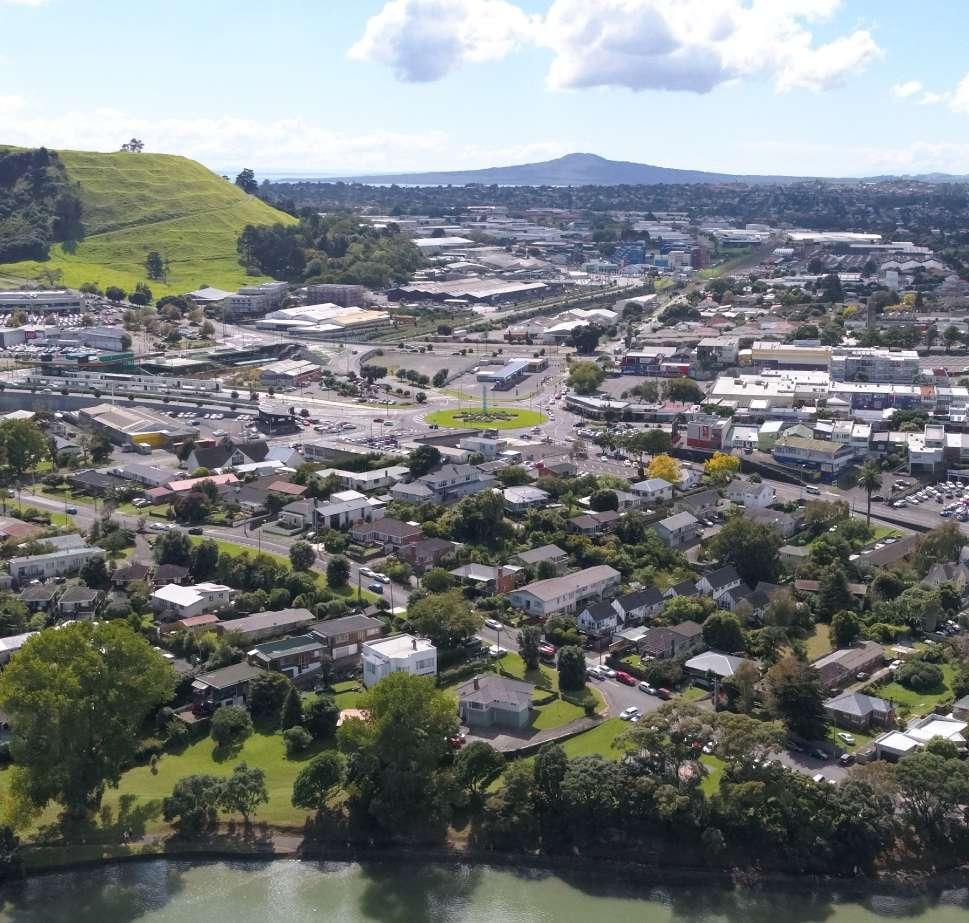
Provide residential choices to accommodate growth and promote low-carbon urban lifestyles.
Town centres are changing, with increasing urban living and residential choices available for people at all stages of life. With more people living in a town centre, the centre itself can become more vibrant, and safer, with more activity during day and night. Ensuring that new homes are built to sustainable standards gives people the opportunity to live in warm, dry homes with lower running costs. More residential choices in town centres helps to accommodate future growth as well as enabling low-carbon urban lifestyles. Town centres are the heart of their neighbourhoods and can provide the daily needs of residents within a 15-minute walk from home, especially important for those with extra mobility needs.
Increase supply of new homes in proximity with transport choices, jobs and services to reduce carbon emissions. Support higher-density typologies that enable urban, lowcarbon lifestyles. Accommodate growth through a quality compact approach, with supportive planning, infrastructure provision and development by the private sector.
Encourage a wide variety of residential choices in the wider neighbourhood precinct. Facilitate an increase in supply of new homes, including social, affordable and market homes. Offer a mix of housing typologies, tenures, price points and sizes to complement existing housing options in the wider neighbourhood precinct. Carefully plan longer-term transition to increase housing opportunities in town centres whilst minimising any unintended detrimental impacts on existing communities.
Support opportunities to improve housing outcomes for Māori in Tāmaki Makaurau / Auckland to support iwi, hapū and whānau to meet kāinga (housing) needs. Engage with emergency transitional housing support, provided through various agencies using the housing-first approach, based on kaupapa Māori (Māori ideology), with wraparound services.
Encourage innovative housing models such as progressive home ownership, community-focused housing, key worker housing, build-to-rent and innovative construction methods (e.g. pre-fabrication, zero waste and social procurement approaches).
5.3 Low-carbon healthy homes
5.4 Enabling infrastructure & Neighbourhood amenities
5.6 Good design in the built environment
Ensure that new homes meet minimum sustainability standards, and are warm, dry and energy efficient with lower running costs. Support universal accessible design standards for homes designed to cater for diverse accessibility needs, with a focus on visitable and adaptable homes.
Prioritise infrastructure investment that supports a quality, compact Tāmaki Makaurau / Auckland, and one that both builds resilience and supports climate action. Ensure town centres provide easy access to a range of services, including shops, professional services, community, health, education, transport and green spaces.
Use careful design to ensure that new homes, other buildings, streets and open spaces contribute to, rather than detract, from the overall amenity and value of a place. Add value to people’s lifestyles through highquality, new buildings that explore innovative solutions for higher-density homes, and provide safe and accessible outdoor environments, including streets, civic places, community spaces and green spaces.

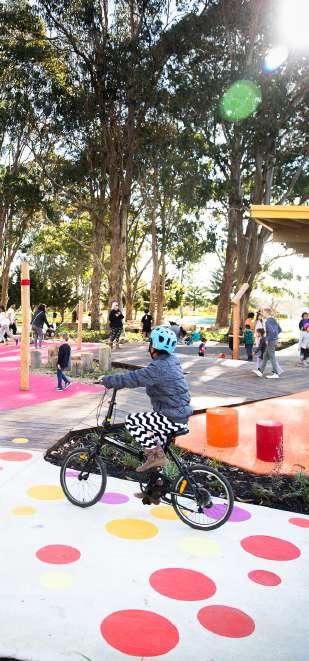

Adapt to change and prepare for future opportunities, nurturing prosperous places.
Thriving town centres are prosperous places that support a robust and resilient local economy. They offer a range of shops, services, businesses, employment opportunities, community facilities, amenities and homes for people to live in.
A high-quality town centre will adapt to change and make the most of future opportunities with resilient businesses and communities. Effective, collaborative management nurtures the quality of the town centre experience, providing an attractive place to visit and stay.
6.1 Mix of uses
Ensure a mix of uses and activities with businesses that reflect local identity, including a diversity of property types suitable for different enterprises.
Create opportunities for a mix of businesses that reflect local identity, including a diversity of property types suitable for different enterprises.
Plan for the future in a way that helps town centres become adaptable and flexible, anticipating climate, social and economic shifts.
Make buildings, public realm and public assets adaptable to changing use and diverse community needs.
Establish opportunities and capacity for business growth, strong connections to local employment areas and jobs with easy access to public transport, cycling and walking networks.
Collaborate with partners and stakeholders to attract investment and appropriate sector-based economic growth into town centres.
Seek opportunities to progress sustainable procurement to improve social and economic wellbeing.
Enhance the unique offering of a town centre, such as its anchor activity/ies, and nurture its retail / hospitality offering to compliment these attributes.
Combine quality, in-store retail experiences with quality urban environments, local events and placemaking that engage with community hubs.
Recognise the Business Improvement Districts’ (BIDS) important role in managing the town centre on behalf of local businesses and retailers.
Curate quality, place-specific experiences through a local offering with community hubs and facilities - e.g. retail, libraries, community centres, social sector groups - to attract visitors, create vibrancy and promote activity.
Manage a transition strategy over time and effectively communicate this with businesses and communities for short, medium and long-term urban change. Be prepared for rapid change, with robust, flexible strategies in place that can be acted upon if needed.
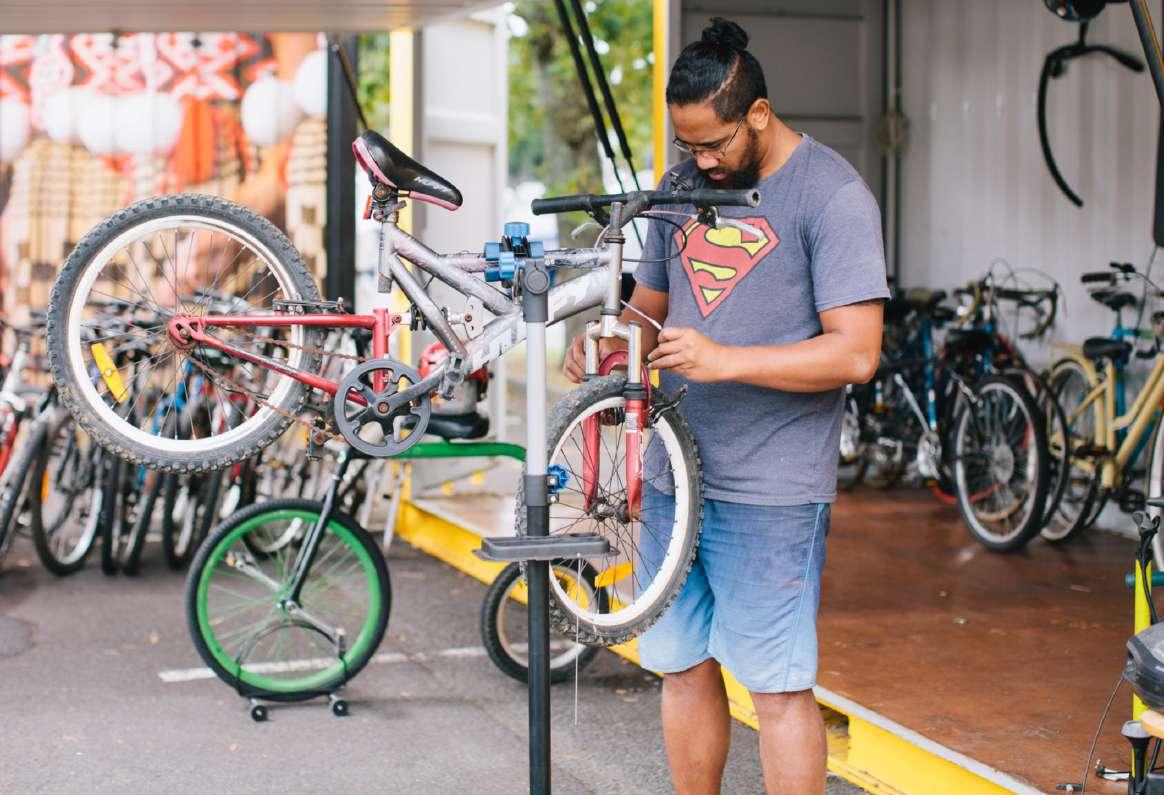

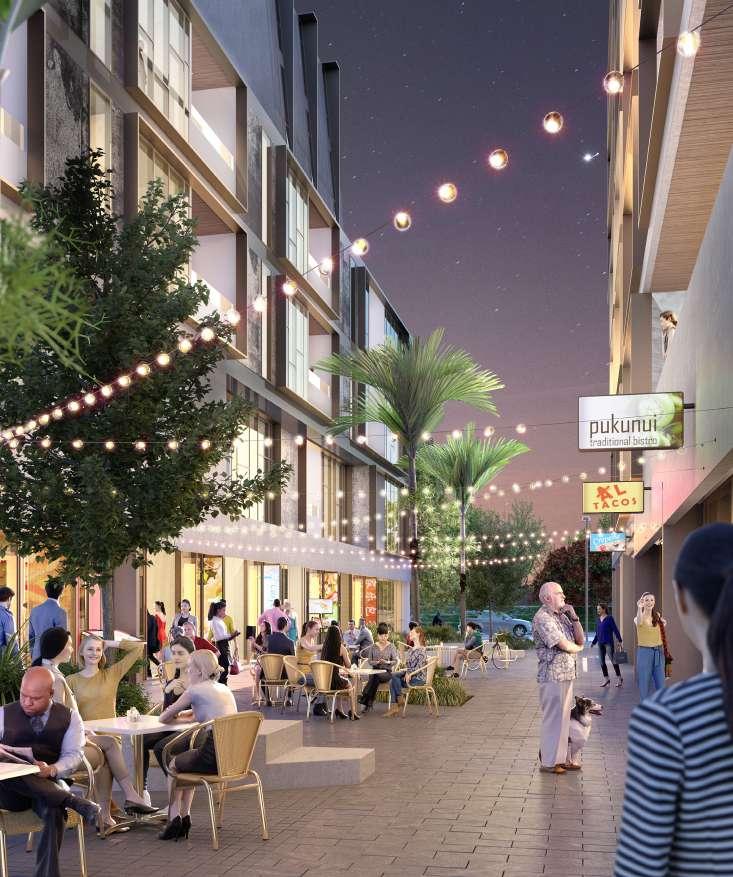

Town centre regeneration is a complex undertaking, one that involves the successful collaboration of many different people and organisations towards a shared vision. Eke Panuku takes an active role in bringing people together, facilitating and delivering that vision.
We are collaborators, creators, curators and caretakers and, for the most part, Aucklanders ourselves.
Through our hard mahi and experience we have identified the following critical success factors of urban regeneration.
This is captured in our high-level project plans and masterplans. We build buy-in and support for the vision and urban change through ongoing placemaking, communications and engagement activity. Through early partnering with iwi, local communities and wider stakeholders, we are able to deeply understand our town centres and work together to co-create a clear purpose for our activity.
Prepared for each town centre location, the programme business case presents the optimal package of projects, budgets, responsibilities, benefits and delivery timeframe. Spatial delivery plans are a visual representation of key projects within each programme showcasing the vision for the place. Our benefits realisation framework and total value analysis method help us to identify and assess financial and non-financial benefits of urban regeneration.

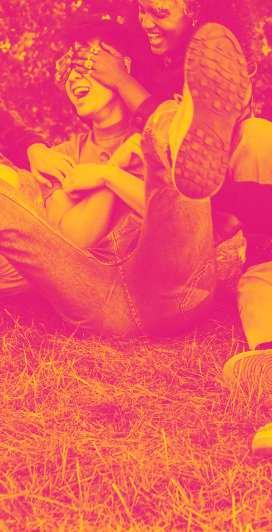

We work with development partners such as the Crown, Kāinga Ora, mana whenua iwi, private developers and community housing providers to realise urban redevelopment opportunities. New development must be commercially feasible for development partners, whether they are private or public. This requires balancing multiple objectives and careful consideration of trade-offs. Development involves significant investment and risk, this requires an understanding of the market demand, ability to secure pre-sales, manage construction risk and financing.
We use development agreements to achieve essential outcomes as part of a site sale to ensure overall consistency of the development programme. We may acquire land or seek to consolidate sites to create value and lead to better urban outcomes, and this may sometimes require investigation under the Public Works Act. We may also undertake site infrastructure works to improve land feasibility and value.
Mana whenua, with mātauranga Māori and te ao Māori, help us to create authentic public spaces and development that are found nowhere else in the world.
Our interdisciplinary regeneration teams include embedded design professionals spanning architecture, landscape architecture and urban design. We use master planning to establish an overall spatial approach and scope for our projects. Master planning includes more detailed consultation, context analysis and feasibility studies. We also define essential outcomes through development agreements to summarise the vision and outcomes for the site supported by design guidance. This incorporates wider concerns e.g. the Auckland Design Manual, mana whenua and sustainability outcomes.
The Eke Panuku Climate Strategy, Te Rautaki mō te Huringa o te Āhuarangi, provides our approach to reduce greenhouse gas emissions and adapt to a changing climate. We use sustainability standards (e.g. using tools such as Homestar, Greenstar, Greenstar Communities, public realm) to enable low-carbon and resilient communities and support Auckland Council’s climate plan, Te Tāruke-ā-Tāwhiri.
Sustainable procurement helps us to reduce environmental impacts and address aspects of social and economic disparity.
We also use our Technical Advisory Group (TAG) to provide external and independent design review. TAG is made up of experts in urban design, landscape and architecture. The panel’s role is to ensure that our projects are high-quality, holistic and involve an integrated approach.


We work with a range of leading development partners who share our vision for innovation and quality in urban regeneration, and who bring a wealth of experience to our projects. We acknowledge the significant role of the private sector in creating exciting urban places and thriving town centres. We build strategic partnerships with the Crown, Kāinga Ora Homes and Communities, mana whenua iwi, private developers, community and Māori housing providers to increase housing supply and residential choices in our locations.
We work with these development partners to explore opportunities to increase social and affordable housing in conjunction with government programmes, housing innovation and best-practice approaches. This supports the Government National Policy Statement (NPS) on Housing and Urban Development, MAIHI Ka Ora, the National Māori Housing strategy, and the Independent Māori Statutory Board’s (IMSB) work on the Kāinga strategic action plan.


Catalyst projects make use of public investment as a catalyst to attract additional private (or partnership) investment and change the perception of the area (e.g. new apartment development, community centre, supermarket, or destination play area). Exemplar projects showcase design and construction innovation and best practice nationally and globally.
Land, property and business owners play a critical role in the successful regeneration of mixed-use town centres through the individual decisions that they make in developing, leasing or tenanting their properties, amalgamating sites, undertaking property fit-outs, street frontage upgrades and removing graffiti. A collective effort will enable the greatest transition.
Eke Panuku manages commercial and retail properties within some town centres. As part of our place management and leasing activity we consider the trade-offs between activity/uses, revenue and vacancy rates, and seek to tenant properties in a way that supports the long-term vision and vibrancy of centres and the existing service offer.
Urban change is a long game, and understand that change can create a lot of uncertainty for people and communities. We work hard to build community support and active participation in our programmes, acknowledging the valuable strengths and skill-sets different groups and individuals bring to their town centre, all of which are needed to build successful places.
We connect with communities in our neighbourhoods to better understand community identities, needs, aspirations and tailor our programmes accordingly. Our ongoing engagement and communications activities help build community awareness and support over time. As the lead agency for the neighbourhoods in which we work, Eke Panuku aims to ensure the council group engage with the community in a collaborative and joined-up way.
Through placemaking, our communities play a strong, cooperative role in the building of their public places. We encourage local leadership and active participation in local projects such as Te Ara Awataha and the Puhunui Stream Restoration to build support, local ownership and ongoing stewardship. Our placemaking programmes build trust and knowledge to inform, test and foreshadow future design, aligned with the Thriving Communities 2022 kaupapa and approach.


Auckland Council and CCOs (Auckland Transport, Auckland Unlimited, Watercare and Eke Panuku) - we work together to cater for growth across Tāmaki Makaurau. Alignment of strategic direction, outcomes, work programmes, priorities, budget planning and place-based project teams help to ensure good outcomes and optimise the catalyst impact of council investment, ensuring programme delivery is coordinated. Collaboration and alignment of investment across the council group helps to ensure investments - e.g. community facilities, public realm, streets and public transport - will improve services for communities and contribute to successful town centres.
We use various approaches and tools to support our urban regeneration programme and unlock opportunities.
Optimisation is where a council service asset is identified as suboptimal with inadequate funding to maintain or upgrade. Optimisation explores alternative uses, such as mixed-use development and facility integration, and is designed to be cost-neutral.
We also coordinate our infrastructure planning, working alongside infrastructure providers, to ensure sufficient infrastructure capacity and services, both facilitating development and supporting growth in town centres. Through statutory planning mechanisms such as plan changes and resource consents, we seek to support urban regeneration activity under the NPS Urban Development and Auckland Unitary Plan.
It is important to measure and assess our progress throughout the delivery of regeneration plans. A town centre monitoring programme, currently being developed, will measure performance against this guidance, capturing social, economic and environmental measures using information from census data, benefits realisation, community insights and market-based data. To complement this, the Take Mauri Take Hono tool provides a wider cultural measure.
Take Mauri Take Hono is a tool owned and developed by mana whenua that uses both mātauranga Māori and western science to measure and monitor the impact on people, place and nature through our projects. Mauri, the sacred essence of life, can be assessed by identifying tohu (indicators) within a project in ways that reflect its potentiality and its life force. These tohu, ‘Ngā Tohu’, should recognise the site’s distinctiveness and the relationship that mana whenua have to this place. This assessment approach has the potential to positively advocate and influence for broader mana whenua outcomes.
The tohu outlined in the Take Mauri, Take Hono framework are as follows:
• Aho Taiao - Kia kōrero te whenua: the land speaks, is protected and enhanced
• Aho Taiao - Ngā Karekare o te wai: the water speaks
• Aho Tangata - E tipu e rea: growing with nature
• Aho Toi: community pride and ownership
These tohu allow for aligned mātauranga Māori pathways to progressively connect and enhance higher mauri essence and vitality, and are expressed here through Aho Taiao (environment), Aho Tangata (culture and community) and Aho Toi (socio-economic) whenu, or strands.
Ngā Tohu recognise the current baseline state of mauri as a potential ‘negative’ value on the scale, and provide a set of mātauranga design principles which, when applied, provide a ‘positive’ value, i.e. enhancing mauri ora (life force).
The tohu provide an aspirational healthy environment for all stakeholders and partners to uphold. By having collaboratively defined and embedded these in the design process, mana whenua have confidence that they are handing over a legacy for future generations.
Take Mauri, Take Hono is a widely supported framework, but it does not provide a homogeneous, standardised approach. This framework needs to be applied on a case-by-case basis with the approval of those who hold mana whenua status in the area of each project. There are multiple mana whenua groups within each rohe, and engagement with each group is required.


We work collaboratively to build alignment and momentum, ensuring that projects result in change for good. As we face an increasingly uncertain future, this way of working acknowledges the complexity of our town centres and enables multiple stakeholders to collectively work together so that our town centres can thrive.
We know that when we work closely with others, we achieve better outcomes than we would alone.
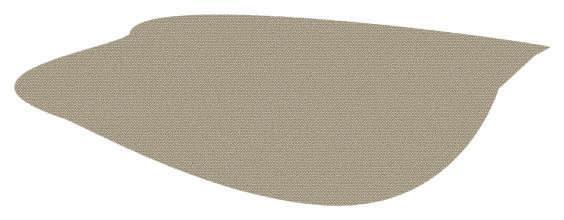

Mana whenua are our Treaty partners. Auckland Council recognises 19 mana whenua iwi authorities. These are:
• Ngāti Wai
• Ngāti Manuhiri
• Ngāti Rehua Ngāti Wai ki Aotea
• Te Rūnanga o Ngāti Whātua
• Te Uri o Hau
• Ngāti Whātua o Kaipara
• Ngāti Whātua Ōrākei
• Te Kawerau ā Maki
• Ngāti Tamaoho
• Te Ākitai Waiohua
• Ngāi Tai ki Tāmaki
• Ngāti Te Ata Waiohua
• Te Ahiwaru Waiohua
• Waikato-Tainui
• Ngāti Paoa
• Ngāti Whanaunga
• Ngāti Maru
• Ngāti Tamaterā
• Te Patukirikiri
Our mahi is all about working alongside the people of each community during their area’s regeneration. This involves talking them through the project and end goal, keeping them updated, and ensuring that they know why we’re making the changes. Involving locals in the regeneration process builds trust though involvement, develops ownership and community pride, ensures transparency through the process, and provides an opportunity to test and try aspects of the change in real time – both before and during change.
In addition to working with community leaders and formal groups, we also ensure that our team connects with everyday members of the community. This means being on the ground with events, activations and opportunities to connect, to make sure we are meeting people in their own area. This way, we get to speak with those who are not connected to the known or ‘usual’ channels, and ensures that our knowledge of, and relationships with, a place are deep, authentic and well-informed.





The Governing Body and Local Boards provide leadership and have decision-making responsibilities across various aspects of our programmes.
We help implement the Auckland Plan 2050 and the Development Strategy through our urban regeneration activity. Our programmes also help implement other council strategies and plans such as Te Tāruke-ā-Tāwhiri: Auckland’s Climate Plan, Area plans, Thriving Communities, Economic Development Action Plan 2021-2024, Urban Ngāhere Strategy, and the Homelessness Implementation Plan.
Customer and Community Services (C&CS) develop new and improved community services and/or facilities where a gap in provision has been identified through the Community Facilities Network Plan. We work closely with C&CS, where community needs assessments identify improvements and/or a gap in provision of services that need to be provided in our locations due to a growing, changing population. This work includes joint planning, funding and asset design and delivery. C&CS create a focal point for local community and visitors, to help shape vibrant town centres with greater pedestrian activity. We also work alongside C&CS where there are opportunities to optimise existing property assets used to deliver services. This might mean rationalising existing properties and using the funding to develop an improved facility that better serves community needs.
Auckland Transport (AT) helps us to plan and implement transport options in town centres. With AT we use available transport system planning tools and plans (e.g. Future Connect, Roads and ekepanuku.co.nz
Streets Framework, Comprehensive Carparking Management Plans, Regional Public Transport Plan, Urban Street and Road Design Guide) to develop a transport framework and plan to address the anticipated short, medium and long term state of the centre and changing transport user demands. Identify existing and future strategic transport priorities to help reconcile wider placebased and movement characteristics of individual centres. The outputs of these assessments will inform funding and implementation processes.
Auckland Unlimited creates economic and cultural opportunities and experiences, working with partners to grow Tāmaki Makaurau / Auckland’s innovation culture, businesses and sectors, attract international investment and visitors. It also manages Auckland’s network of regional facilities offering arts, cultural, conservation, sport, heritage and business experiences. Auckland Unlimited leads on Auckland’s economic development strategy and supports local economic development working with local boards. We work together to attract investment, innovation and business growth into town centres e.g. the Wynyard Quarter innovation precinct, the Henderson film sector.
Watercare is responsible for Auckland’s water and wastewater system. The company plans for growth and delivers bulk infrastructure such as treatment plants, pump stations and transmission pipes. Watercare works closely with the development community to support local network construction and expansion.
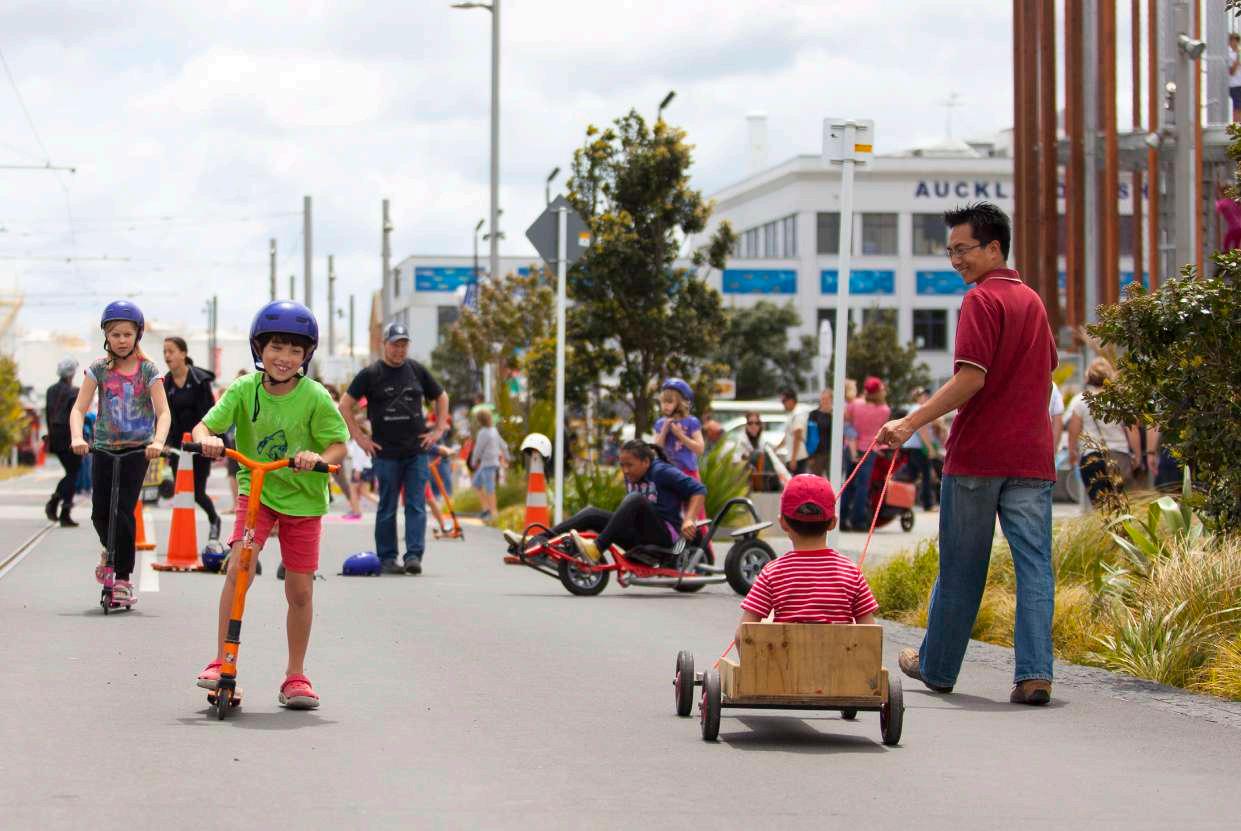
The Crown has a critical role to play, providing significant investment in urban regeneration. Whilst not focused on town centres, Kāinga Ora - Homes and Communities is facilitating a significant housing programme across Auckland. We seek to ensure that our development programmes are aligned and that the use of public land, our individual projects, and joint developments support the overall vision and provide for residential choices. Other government agencies with a significant role in urban regeneration include Waka Kotahi NZ Transport Agency (leading the planning for light rail), the ministries of Health, Social Welfare, Justice and Education (that build facilities and provide services in and around town centres). Through this investment, the government can support the vibrancy and success of town centres.
Development and housing partners assist us in developing positive strategic partnerships with the private development sector, mana whenua iwi, community and Māori housing providers, and the Crown.
Landowners and business owners have a critical role in the prosperity, amenity and vibrancy of town centres and their regeneration.
Community leaders and community groups lend us their local expertise, lived experience and knowledge of a town centre. Council’s advisory panels can provide understanding and advice from different community perspectives – disability, youth, seniors, ethnic peoples, rainbow and rural.
BIDS and Business Associations have an important role in place management, business relationships and destination marketing of their town centre.
Social services – Housing First, Kāhui Tū Kaha, Auckland City Mission and Salvation Army - help to support the most vulnerable members in our community, including people experiencing homelessness. This work supports Kia Whai Kāinga Tātou Katoa: the regional, cross-sectoral homelessness plan and its implementation.

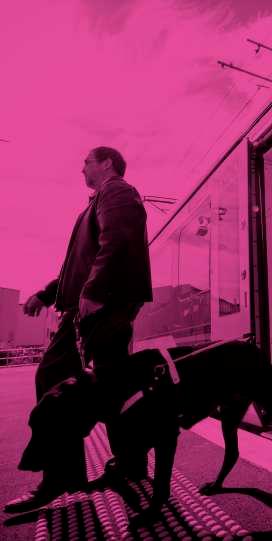



The Eke Panuku project leads for Thriving Town Centres are Naomi Craymer and Duncan Ecob, who were enabled throughout the process by careful curation and direction of the project sponsors Gyles Bendall and Brenna Waghorn. Duncan and Naomi would like to thank the exceptional team inspiring them along the journey, providing thought leadership on input, editing, organising and production. Whilst we cannot name all of those involved special mention goes to Maria Walker, Roxanne Haines, Delwyn Burke, Rory Palmer, Theresa Walsh, Anthony Hawke, James Cain, Sara Zwart, Daniel Haines, Joshua Koko and Mai Korin. We would also like to thank the teams at Auckland Council, Auckland Transport, Auckland Unlimited and Watercare who have generously contributed their insights and advice. Thanks to the design team at Federation and Leon Blake of Kounga Limited for translation into Te Reo. And of course to all our partners and stakeholders who engaged with us, from both the public and private sectors, enriching our appreciation of how thriving town centres can enhance quality of life for everyone.